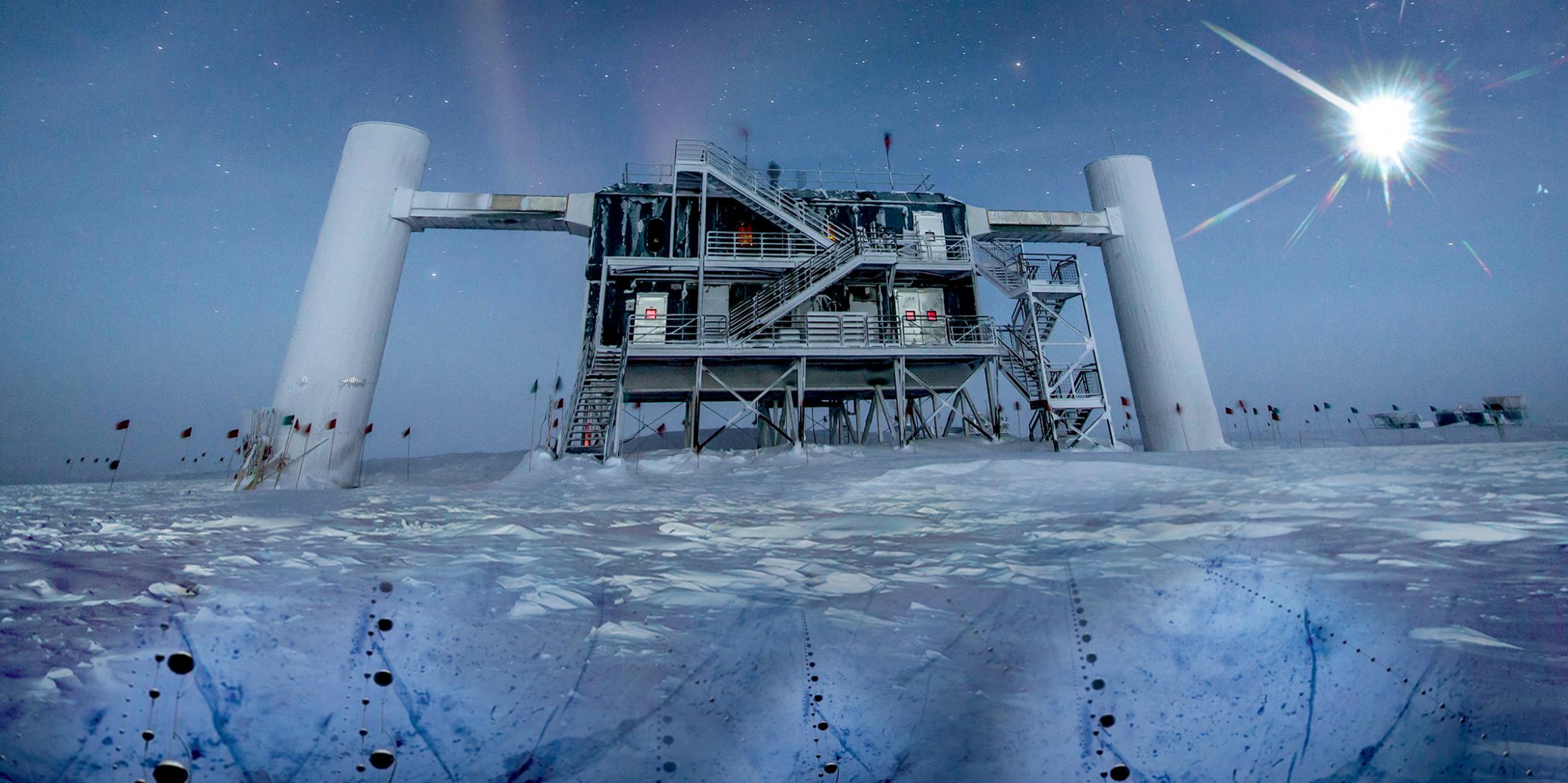High-Energy Neutrino Astronomy with the IceCube Detector at the South Pole

Artistic composition, based on a real image of the IceCube Lab at the South Pole, a distant source emits neutrinos that are detected below the ice by IceCube sensors, called DOMs - image credit: IceCube/NSF
This physics honours projects contributes to the IceCube detector's science goals.
The IceCube detector is the world's largest high-energy particle detector. Instrumenting a cubic kilometre volume of the clear ice below the South Pole Station, Antarctica, this detector has many science goals, all of which may be explored as honours projects.
In 2018, IceCube led an international group of ground and space-based detectors in analysing data from a neutrino-gamma-ray coincident observation of the blazar TXS 0506+056 – showing that it is likely that this galaxy, located about 4 billion light years away, is a neutrino source, the first specific object identified in high energy neutrinos.
While the blazar TXS 0506+056 is the first identified source of neutrinos, we are yet to understand where the rest of the astrophysical neutrinos (around 1000 of the highest energy neutrinos of the entire sample, which is mostly lower energy background neutrinos made from cosmic ray interactions in the Earth’s atmosphere) we see are coming from. We want to understand more about the sources, and how they make neutrinos.
These neutrinos are most likely produced during the acceleration and interaction of the highest energy particles in nature, as we expect for TXS 0506+056. These locations could include the centres and jets of active galaxies, gamma-ray bursts, and supernovae. There is much work to be done in analysing the neutrino data, and determining which of these possible sources, or mixture of sources, and how they are distributed through the Universe, leads to the energies and locations across the sky that we actually see.
In addition to the primary study of the distant neutrino sources, there are other scientific goals of IceCube. The detector currently records thousands of atmospheric neutrinos each year, which are a beam for studying the boundaries of modern particle physics. Dark matter, the hypothesised missing 25% of the Universe, may be observable in IceCube as a signal resulting from neutralino capture and annihilation in the Sun and centre of the Earth (see also available projects for direct dark matter detection with SABRE under experimental high-energy physics). The detector is also a powerful low energy supernova neutrino detector.
Honours projects which would contribute to these IceCube science goals could cover many important areas e.g. understanding the nature of the neutrino source TXS 0506+056 and looking for more such sources, correlating the other full sky astrophysical neutrinos with other types of detections (cosmic rays, gamma rays), looking for structure in the neutrino sky, improving the energy and directional reconstruction of the neutrinos, and working on detector calibration, simulation and statistical analysis methods.
Theoretical studies of potential neutrino sources are also possible as projects – understanding what we see at Earth depends on an understanding of the distribution of sources through the Universe, and we work on detailed calculations of source contributions, taking into account the cosmology of the Universe.
Supervisor

